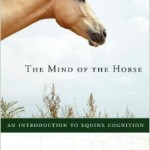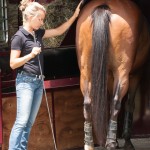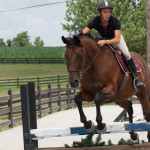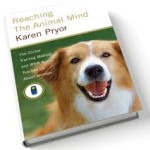How intelligent are horses? How do they think and how do they view the world? What are their cognitive abilities? These are questions that are essential to making our interaction with and training of horses better, but seem to rarely be asked outside of the scientific community. As I strive to make my training more effective and easier for the horse, I realized that I need to understand the horse better – how their brains work and what both the possibilities and the limits are for their cognition and learning abilities. In my quest to learn more about this subject, I stumbled on The Mind of the Horse by Michel-Antoine Leblanc. The author is French and this book is the English translation of his original work.
The book is essentially a thorough compilation and review of the studies that have been done on equine cognition. It begins with discussing the nature and ethology of the horse and what has been known of equine intelligence through the years, including the stories of such horses as Clever Hans, a horse who could correctly answer arithmetic problems by reading the nearly invisible cues on his handlers face and body position. The Mind of the Horse then goes into a detailed description of the equine brain and what we know about how the horse perceives the world through numerous studies on vision, hearing, smell, and touch.
Parts of the book can become very detailed in their descriptions of the studies and their specific findings, so it may be a slow read for some. However, there were many insights and findings from these studies that surprised me. Here are just a few that stood out – First, I find it amazing how well the horses would participate in many of the studies by standing quietly in the wait area, moving forward when prompted, making a choice between several stimuli, receiving their reward for a correct response, then returning to the wait area.
I enjoyed reading about the visual experiments, where the horses learned to differentiate between different shapes, sizes, and colors, then some were even able to generalize that learning to other experiments.
I also learned that the horse’s two brain hemispheres – right and left – process information differently and generally, more emotional responses are associated with the left side of the body (which would be the right brain hemisphere). This means that a horse who has not had formal handling is more responsive to a person or other scary stimulus approaching from the right side of their body. However, after training, this preference can go away.
One more experiment outlined in the book that really struck me was that of scratching the withers. First there were several studies that showed that wither scratching can lower a horse’s heart rate. The withers is the special spot though, as touching other places on the body (such as the shoulder) did not affect heart rate or even increased heart rate. However, when they compared using wither scratching compared to a food reward, they found that the wither scratching was not nearly as effective as a positive reinforcement and also did not increase “attachment” to the human, whereas food rewards did increase attachment.
These are just a few examples of interesting discoveries that are discussed in The Mind of the Horse. If you are interested in learning more about how horses think and how they see the world, then I would recommend The Mind of the Horse. It is not an easy read, but a worthwhile one!














2 Responses